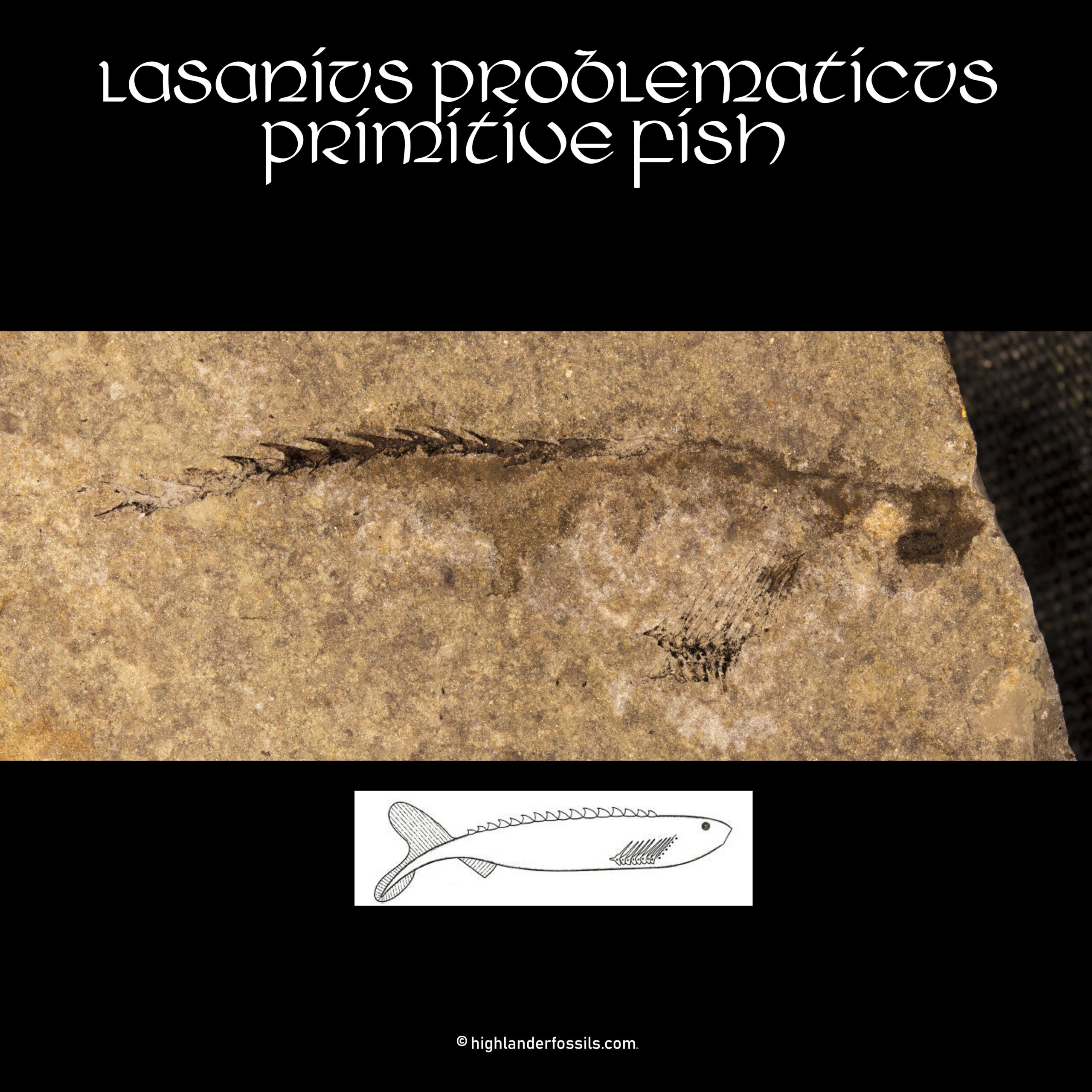Description
Lasanius problematicus anaspid fossil
Physical description
Lasanius problematicus is a primitive type of fish called an anaspid. Its gill units were similar to modern lampreys in that they were composed of a row of circular gill openings. The body is long and slender and was armed with defensive hooks along its back. The most characteristic feature of this fish are the structures located behind the head, which are called the post-cephalic rods. Lasanius owes its specific name ‘problematicus’ to the fact that the function of these structures was a mystery. Nowadays these structures are regarded as supportive elements for the buccal pump mechanism, which aided in respiration. L. problematicus could reach lengths of about 10 cm but most are a lot smaller than that.
Age and Distribution.
Lasanius is from the Lower Silurian Fish Bed Formation of Scotland, approximately 430 million years old. Other fishes occurring at this horizon are the anaspid Birkenia elegans, the thelodonts (proto-sharks) Lanarkia spinulosa, Lanarkia horrida, and Lanarkia lanceolata, the osteostracan Ateleaspis tessellata, and the recently-discovered euphaneropid Ciderius cooperi. The eurypterid (sea scorpions) Lanarkopterus dolichoschelus also occurs in this fauna, as well as enigmatic objects such as Taitia catena and Dictyocaris sp.
About the Anaspida anaspid fossil
Evolutionary significance
The Anaspida are known exclusively from Silurian and Devonian formations of the northern hemisphere. Lasanius is the only non-birkeniid anaspid known. All other known anaspids have a body completely covered by scales. The scalelessness of Lasanius allows scientists to see some of their internal anatomy, which is preserved on rare occasions.
Taxonomy
The scaleless Lasanius belongs to the Lasaniidae, part of the class Anaspida, which has been grouped placed with informally termed supergroup ‘ostracoderms’. These fishes are regarded as the jawless precursors to the jawed fishes. All other anaspids are Birkeniid anaspids. The relationship between anaspids and other groups of early fishes remains up for debate.






